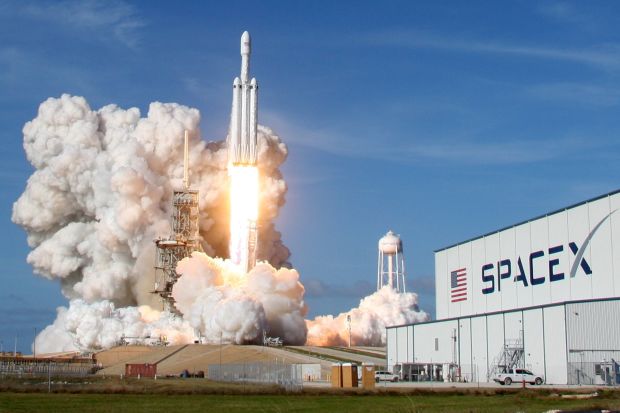It’s not every day that someone launches 60, yes 60 satellites in to orbit in one go, but that is what SpaceX, the private rocket company of high-tech entrepreneur Elon Musk, did at the end of May by launching the first batch of 60 small satellites into low-Earth orbit for their new Starlink internet service.

A Falcon 9 rocket carrying the satellites blasted off from Cape Canaveral Air Force Station clearing a key hurdle for a business venture that SpaceX hopes will generate much-needed cash for their larger ambitions in space.
The launch came a week after two back-to-back countdowns for the mission were scrubbed – once due to high winds over the Cape and the next night in order to update satellite software and “triple-check” all systems.
The 60 satellites flown into space were released into orbit as planned about an hour after Thursday’s launch, and the Falcon 9’s main-stage reusable booster rocket flew back to Earth for a successful landing on a barge floating in the Atlantic.
SpaceX said it would probably take another day to learn whether all the satellites deployed were functioning properly. Each weighs about 500 pounds (227 kg), making them the heaviest payload carried aloft by SpaceX to date.
They represent the initial phase of a planned constellation capable of beaming signals for high-speed internet service from space to paying customers around the globe.
SpaceX sees the new Starlink venture as an important new revenue stream for their California-based Space Exploration Technologies whose launch service income they expects to top out at around $3 billion a year.
SpaceX told reporters last week that makes Starlink pivotal in helping pay for larger goals of developing a new spacecraft to fly paying customers to the moon and for eventually trying to colonize Mars.
“We think this is a key stepping stone on the way toward establishing a self-sustaining city on Mars and a base on the moon,” according to ElonMusk the CEO of , who is also chief executive officer of automaker Tesla Inc.
At least 12 launches carrying similar payloads are needed to achieve constant internet coverage of most of the world, for now, Starlink is only authorized for U.S. operations.

SpaceX faces stiff competition. Airbus SE-backed OneWeb launched its own clutch of satellites in February, while LeoSat Enterprises and Canada’s Telesat are also working to build data networks.
In each network, the tiny satellites orbit closer to Earth than traditional communications satellites, a technological shift made possible by advances in laser technology and computer chips.
SpaceX would begin opening up to customers later this year or next year. As many as 2,000 satellites will be launched per year, with the ultimate objective of placing up to 12,000 into orbit.










